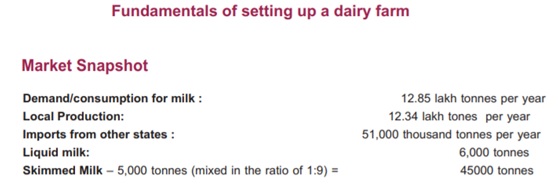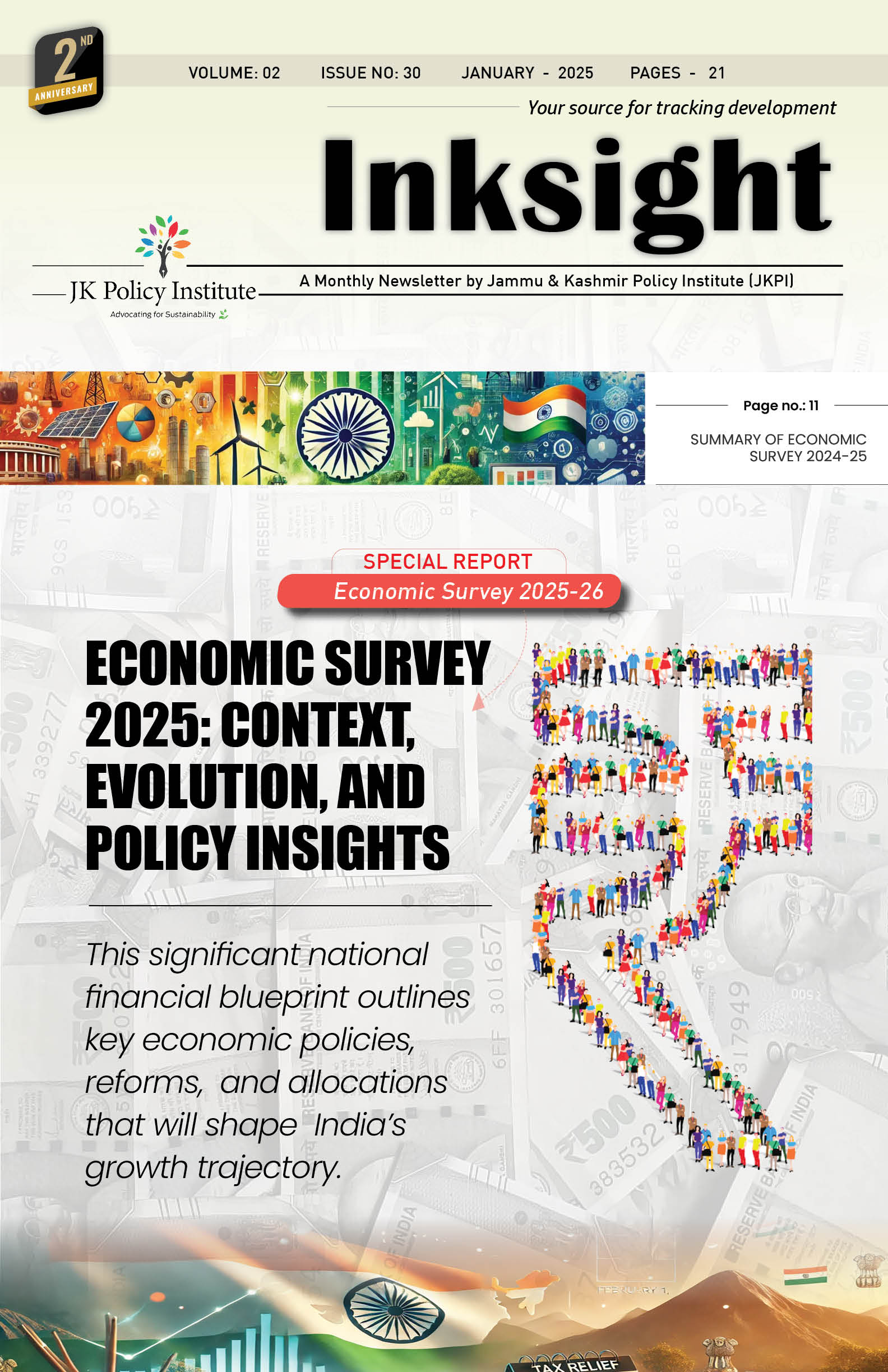A way to achieve that is to use better management practices and technologies.
Milk production takes place all around the globe. Worldwide demand for dairy continues to increase in large part due to population growth, urbanization, and rising incomes in India. And Jammu and Kashmir Union Territory is no exception. Yet, with an increasing demand for dairy, there is growing pressure on natural resources, including freshwater and soil.
Livestock is emerging as an important sector in the socio-economic development of Jammu and Kashmir. With almost 80% of the UT population residing in rural areas, about 60% of total revenue is generated by the agriculture and animal husbandry sector. As such, dairying has the potential to turn into an additional source of income for the citizens of J&K. Contribution of this sector to the national/state income is invaluable. As per expert opinion, it helps in increasing crop production by providing drag power, organic manure, and cash income on a regular basis.
“Dairy is a catalyst for boosting agri-economy” – Principal Secretary, Animal and Sheep Husbandry, Navin Choudhary
The Union Territory produces 70 lakh liters of milk per day whereas Kashmir, alone, produces about 40 lakh liters of milk per day out of the total. South Kashmir leads in milk production.

In Jammu and Kashmir, thousands of farmers and budding entrepreneurs have been hugely benefited from dairy farming owing to its profitability and increase in demand. The government is also encouraging more youth to join this sector that is climatically viable too. There is a great demand for establishing dairy farming units in Jammu and Kashmir. According to an estimate, presently some 1,700 dairy units are required in Kashmir so the dependence on imports from neighboring states is cut permanently.
Dairy farming, thus, has the potential to generate jobs for thousands of unemployed youth. In view of this, the Milk Production Expansion Plan proposed that the Jammu and Kashmir Milk Producers Cooperative Limited (JKMPCL) will raise the capacity of JKMPCL from 50,000 LPD of milk production to 2.5 Lakh LPD in the next three years.
Several central and state-sponsored schemes have also been launched to help and uplift the marginalized farmers. The Integrated Dairy Development Scheme started has hugely benefited the farmers. Beneficiaries with 5 to 50 cow units can also avail several benefits from the government-run schemes. As of now, there are 476 single five cow units in Kashmir.
During the first wave of the Covid-19 pandemic, agriculture and allied sectors put up a spectacular performance with an annual growth of 3.4% while the economy shrunk by 7.2% in 2020-21. According to reports, in the farm-dependent population comprising cultivators and agricultural laborers, those involved in dairying and livestock constitute 70 million. However, given the nature of production and sale of milk in India, milk producers are highly susceptible to even minor shocks as the demand for milk and milk products are sensitive to changes in the employment and income of consumers.
According to reports, the dairy farmers need the following to continue their vocation:
- Stable market and remunerative price (ignoring fat content or giving more weightage to the quantity of milk) for liquid milk;
- Uninterrupted supply of fodder and cattle feed at a reasonable price;
- Regular supply of veterinary services and medicines.
Environmental Impacts
Overall, a quarter of global emissions come from food.
With an increasing demand for dairy, there is growing pressure on natural resources, including freshwater and soil. Globally, millions of farmers tend approximately 270 million dairy cows to produce milk. Milk production impacts the environment in different ways. The scale of these impacts depends on the practices of the dairy farmers and feed growers. The United Nations’ Food and Agricultural Organization (FAO) figured that between 2005 and 2015, as demand for milk grew, the dairy cattle industry’s greenhouse gas emissions increased by 18%.
Dairy cows and their manure produce greenhouse gases, such as methane, nitrous oxide, and carbon dioxide, which contribute to climate change. Poor handling of manure and fertilizers degrade local water resources. And unsustainable dairy farming and feed production leads to the loss of ecologically important areas, such as wetlands, and forests. In some areas, they contribute to the conversion of natural habitat to agricultural land because of the increasing demand for feed crops such as, alfalfa, corn, and soy.
- Dairy operations can be key contributors to water pollution and soil degradation when manure and feed crop production are poorly managed.
- Airborne emissions of ammonia can damage downstream habitats, thus resulting in the loss of species diversity. The yield of particulate matter and odor from on-farm activities can negatively impact air quality.
- Dairy can consume large volumes of water to manage manure, grow feed, water cows, and process products. Also, manure and fertilizer runoff from dairy farms can pollute water resources. Increased nutrients in local waterways contribute to the growth of algae, which reduces oxygen for aquatic plant and animal life.
- Over 2/3rd of the world’s agricultural land is used for maintaining livestock, including beef and dairy cows. Livestock farming is one of the main contributors to soil erosion around the globe. One-third of the world’s land suffers desertification mostly due to deforestation, overgrazing, and poor agricultural practices. Overgrazing, turning forests into pasture or feed crop production areas, soil impaction from cattle’s hooves can lead to extreme loss of topsoil and organic matter that could take centuries to replace.
- Improper handling of dairy cows decreases the productivity of cows due to stress and ill health, leading to increased greenhouse gas emissions. Disease in cattle may limit export options, pose supply risks, and contribute to production inefficiencies.
Recommendations
Farmers, the world over, can profoundly reduce environmental impacts through the use of better management practices and technologies.
- On average, a bovine animal weighs 400 kg and discharges 15-20 kg/day of dung and 12-14 liters/day of urine. Solid wastes produced from dairy farms and gaushalas are organic and non-hazardous in nature. So, proper handling and disposal are required.
- Properly managed manure application and grazing can improve the soil health of pastures and croplands. In some conditions, dairy cows can also contribute to healthy habitats through well-managed grazing.
- Ecologically sound and economically viable technological solutions can be promoted across the country to handle various types of bio-wastes for achieving targets of zero waste and maximum recovery of materials.
- When it comes to dairy waste, which in itself is the world’s best organic fertilizer, only awareness among dairy owners combined with strict implementation by concerned local bodies, is required to prevent such a valuable resource from ending up in drains.
- Cattle urine is a powerful natural pesticide and, if used properly, can save human beings from the harmful effects of pesticide residues.
- Management of precious dairy waste can be done by using very simple technologies and in a very cost-effective manner depending upon the number of cattle heads, space, and budget. Biogas production, one of the renewable energy alternatives to fossil fuels, can be encouraged using this waste organic matter.
References:



Leave a Reply
You must belogged in to post a comment.